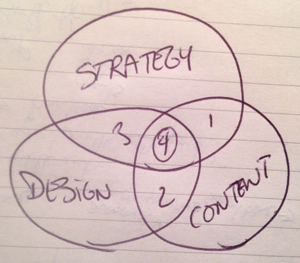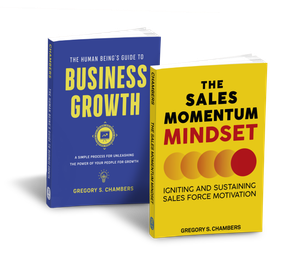But What About the Competition?
But What About the Competition?

A marketing meeting turns a new direction when the CEO says, "Company X has it right. Look at their website. It's so much better than ours. Why isn't our site more like that?" Heads nod as the person managing the projector scrolls through a visually striking website. The CEO catches me shifting in my seat, and asks if I have something to add.
I'm a guest and it's minutes before I have to leave, but I can't let this go.
"Here's the thing. What do we know about the competition? We can look at their website and see the design. We can read through the content. But do we know anything about their strategy or what their vision is?"
The scrolling on the projector stops.
"I just want to challenge the assumption that the competition has it right. Unless you're privy to some seriously private information, it's best to take another approach when it comes to competition: Put them down 4th on the agenda and focus on the big 3."
Blank stares.
The Big 3
"Before we go out of the building and worry about the competition, we need to check three internal items, looking for evidence of one thing: Is our strategy to get to our vision being implemented like we expect?
- "The first place to check is with the customer. Is our customer experiencing the service or product we are providing in the way we expect? Are we fulfilling our vision there? That can be done with surveys or Net Promoter Score, but the most powerful feedback comes from customer panels and direct interaction. Check to make sure the customer is perceiving what you want them to.
- "Second is to get with your front line people. The direct interface with the customer. You want to listen to the words they use when they describe your company's strategy. The challenge with this group, versus customers, is that you have a monetary relationship with them that clouds the conversation. The customer is more likely to tell you your shoes stink because they can leave, but your employees are searching for what you want to hear. Surveys are great, but town halls and face-to-face visits are better. You want to hear their interpretation of your strategy.
- "Third is your general managers. This should be easier since you meet with them on a regular basis, but that's the challenge too. You want to listen to what this group tells you in a self-reflective way. You want to be sure that you're giving them the signals that implementing strategy in the long term matches what you expect in the short term. You want to make sure you're providing them with the resources necessary to implement the strategy and lastly, you want to hear from them that management's inherent comfort with 'present pain, future gain' isn't in conflict with front-line employees desire to put food on the table now. Specifically in the sales department because that's where new customers and future customers live.
"I have to run here, but I want to leave you with this: My best clients are incredibly good at implementing their visions throughout their organization. Many of them have brochures and websites you may find sub-par compared to their competition. All of them worry a lot about whether their customer is getting what their strategy promises. They don't spend much time guessing what the competition is doing."
I point to the projector, "It's great to get inspired by design ideas and content from other businesses, but before you spend too much time there, check with the customers to make sure your vision is coming through."
It's quiet as I gather my notebook and stand up, whispering to the CEO, "I apologize for the disruption, but I have to leave."
The CEO stands too. "That's what I meant about their website," she said, winking.




